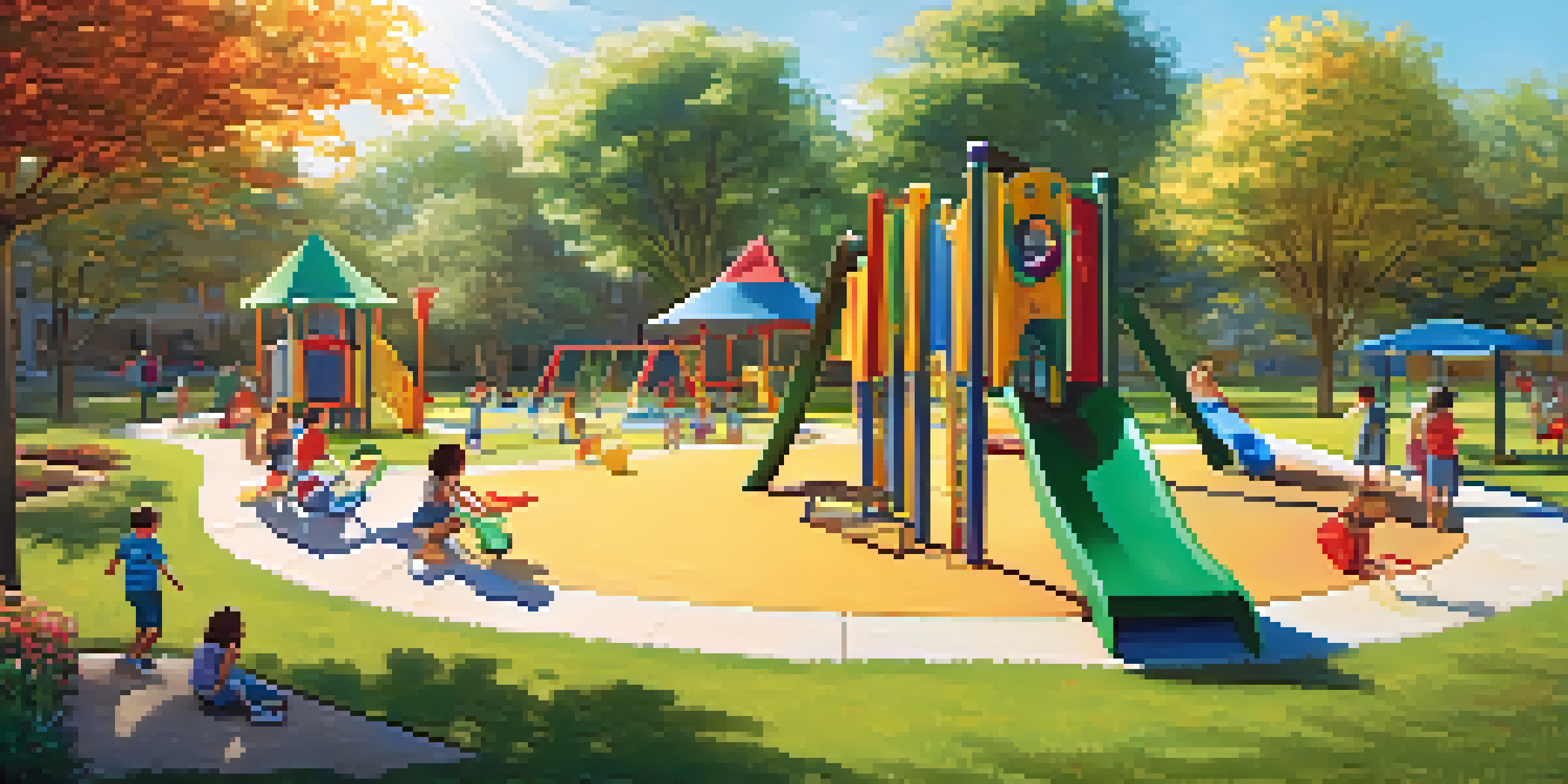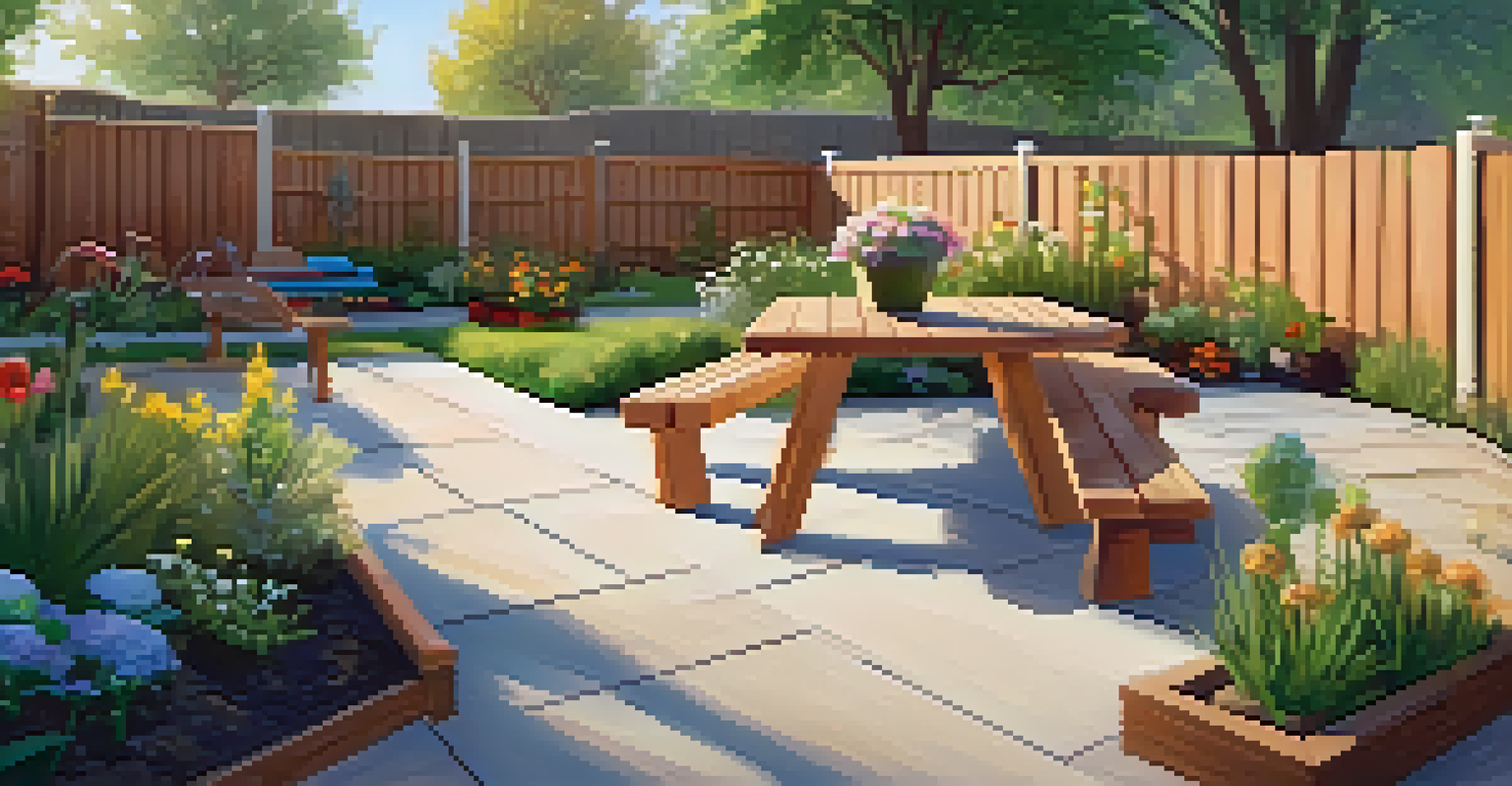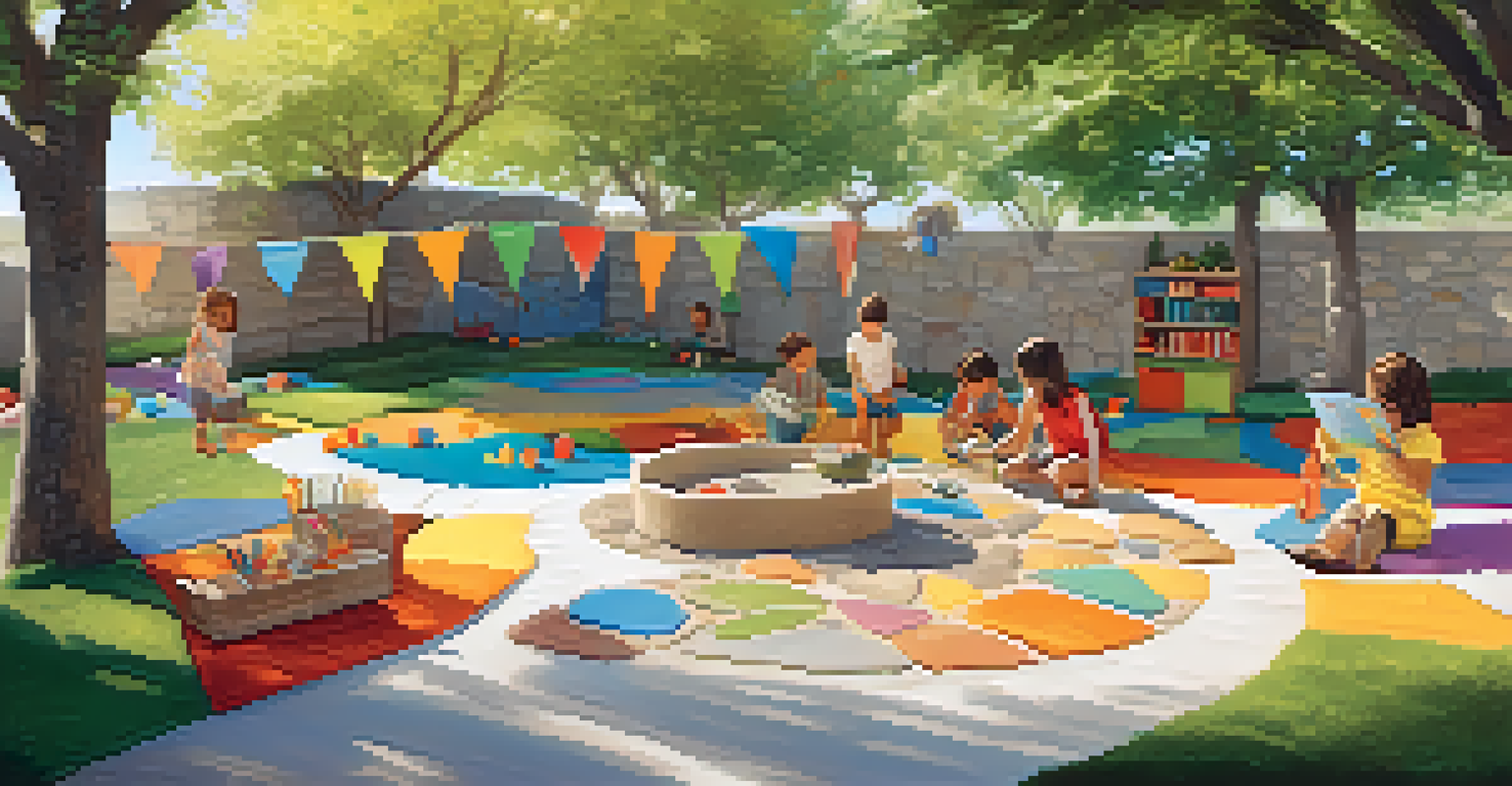How to Create a Safe and Healthy Outdoor Play Area

Understanding the Importance of Outdoor Play
Outdoor play is essential for children's physical and mental health. It allows them to explore, socialize, and develop critical motor skills. In a world increasingly dominated by screens, encouraging outdoor activities can help children reconnect with nature and their peers.
Play is the highest form of research.
Moreover, outdoor environments provide opportunities for creative play, which is crucial for cognitive development. Whether it’s climbing trees or building forts, these experiences foster imagination and problem-solving skills. Simply put, outdoor play isn't just fun; it's a vital part of growing up.
Finally, a safe outdoor play area can significantly reduce the risk of injuries while boosting the children's confidence. When kids feel secure, they’re more likely to take healthy risks, which are essential for their growth and development.
Choosing the Right Location for Your Play Area
The first step in creating a safe outdoor play area is selecting the right location. Ideally, this space should be flat, away from busy roads, and easily visible from your home. This way, you can keep an eye on the children while they play, ensuring their safety.

Consider the environment as well. Look for a spot that is free from hazards like sharp objects, steep inclines, or poisonous plants. A well-chosen location not only promotes safe play but also encourages children to explore their surroundings in a secure manner.
Benefits of Outdoor Play
Outdoor play is essential for children's physical and mental health, fostering exploration, socialization, and motor skills development.
Lastly, think about how much space you have available. You want to create an area that allows for various activities, from running and jumping to quiet corners for sitting and reading. A spacious, thoughtfully chosen location can enhance the play experience significantly.
Selecting Safe and Engaging Play Equipment
When it comes to play equipment, safety should always be your top priority. Look for items that are age-appropriate and meet safety standards. For instance, swings and slides should have adequate cushioning underneath to minimize injuries from falls.
Children learn as they play. Most importantly, in play, children learn how to learn.
Additionally, consider incorporating a variety of equipment to keep children engaged. Features like climbing walls, balance beams, and sandboxes can foster diverse skills and interests. Variety not only keeps playtime exciting but also encourages children to try new activities.
Always keep maintenance in mind. Regularly inspect the equipment for any wear and tear, and promptly address any issues. A well-maintained play area is crucial for ensuring that children can enjoy their time outside without unnecessary risks.
Creating Natural Boundaries and Zones
One effective way to define your outdoor play area is by creating natural boundaries. Fences made of wood or shrubs can keep children safe while also adding to the aesthetic of the space. These boundaries not only provide security but also help children understand where their play area begins and ends.
You can also create zones within the play area to encourage different types of play. For example, designate a quiet corner for reading, a sandbox for imaginative play, and an open space for active games. This zoning can help children learn to navigate different environments and choose how they want to engage.
Safety in Play Area Design
Choosing a safe location and incorporating appropriate equipment are crucial steps in creating an engaging outdoor play space.
Lastly, incorporating elements like pathways or stepping stones can help guide children through the space. These natural features can enhance their exploration while ensuring they remain within the safe zones you've created.
Incorporating Natural Elements for Learning
Integrating natural elements into your outdoor play area can be both fun and educational. Consider adding plants, trees, and rocks, which can serve as both play items and learning tools. Children can learn about nature while also using these elements for imaginative play.
For example, a small garden can be a fantastic way to teach kids about responsibility and the life cycle of plants. They can help with planting, watering, and watching their garden grow, fostering a sense of ownership and accomplishment. It's a hands-on way to encourage curiosity about the world around them.
Natural elements also provide sensory experiences that are often missing from traditional play equipment. The textures of leaves, the smell of flowers, and the sounds of rustling branches can enrich playtime and stimulate children's senses.
Involving Children in the Design Process
One of the best ways to make an outdoor play area truly special is to involve the children in its design. Ask for their input on what types of activities they enjoy and what features they would like to see. This not only makes them feel valued but also ensures the space meets their needs.
In addition, allowing children to contribute to the design process fosters creativity and ownership. They might suggest a fun theme, like a pirate ship or a fairy garden, which can inspire imaginative play. These ideas can help create a space that feels uniquely theirs.
Engaging Kids in Design
Involving children in the design process not only makes the space more enjoyable for them but also teaches valuable lessons in creativity and teamwork.
Finally, including children in the decision-making can teach them valuable lessons about planning and teamwork. It’s an opportunity for them to understand how to express their ideas and collaborate with others to create something they’ll love.
Establishing Rules for Safe Play
While creating an inviting play area is important, establishing rules for safe play is equally crucial. Sit down with the children and discuss appropriate behavior, such as taking turns and respecting each other's space. Setting clear expectations can help prevent accidents and ensure everyone enjoys their time outside.
You might also consider creating a fun visual reminder of these rules. A colorful poster or sign can serve as a constant reminder for kids to follow safety guidelines. This can make it easier for them to remember what’s expected while also adding a playful element to the space.

Lastly, encourage open communication about safety. Let children know that they can come to you anytime they feel uncomfortable or see something unsafe. By fostering this dialogue, you create a culture of safety and trust that allows everyone to enjoy the outdoor space fully.